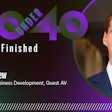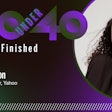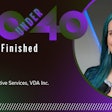Kimo Kippen is chief learning officer for Hilton Worldwide University. Playing a role in taking the company public in 2013, Kippen began with Hilton when it moved its headquarters from Beverly Hills, California, to Tysons Corner, Virginia. He was charged with building and structuring a corporate university for more than 330,000 employees from scratch. He also plays a major part in developing corporate culture at Hilton.
We challenged Kippen, along with three other experts (Nathan Schwagler of The Dali Museum, Sharon Fisher of Play With a Purpose and Jenny Gottstein of The Go Game), to face off on the topic of creativity. Where does it come from? How can you channel it? How can you put it to work to improve your events, your association and the greater good? Kippen shares his thoughts.
What makes you imaginative? I’m a strong intuitive; I play on the right side of the brain. I’m all about ideation. That’s fun for me and it’s how I get energy. I believe learning is innovation and innovation is learning. I work out on an elliptical for 45 minutes while watching three TED talks every day. I also read ferociously. Flipboard is a great way to see news across different outlets that interest me. Is creativity broken in today's world? I think it varies by organization. It’s convergent and divergent, but you still have to get things done. I want to be part of an organization that’s really innovative, but has a balance of being able to get to market quickly and successfully. One of my guiding principles: Does it make the world better? Then I ask: Does it make our jobs easier? Does it make the services we offer to people better? Does it make their lives better? If the answer is yes to all, then it’s a good thing. What is the biggest myth about creativity? That it’s something we all have. You’ve heard the standard lesson around creativity: When a researcher asked a group of kindergarteners if they could sing, they said, “Of course,” and all started singing. That starts to decrease by third grade, and by fifth grade there are very few who think they can sing. The message for me is conditioned behavior. Through our homes, work and schooling, we get a lot of messages about what we can and cannot do—and those are very powerful—but in fact we all have this inner creativity capability within us. What’s the best way to kill creativity? And How can organizations reverse this? It’s all about the approach. Certain phrases kill creativity: We’ve already done that; we’ve tried that; that will never work here; our boss will never accept that; that will cost too much. The best way to ideate is to have an open process that entertains a lot of possibilities, and then narrow it down. Start at the broadest level and get diversity at the table. Get people from different walks of life to participate. [inlinead align="left"]"If all you have is a hammer, all you’re going to look for is a nail." —Kimo Kippen[/inlinead] How does technology affect creativity? Technology is affecting creativity in a wonderful way and in an informal fashion. There’s the 70-20-10 model about learning: 70 percent is informal; 20 percent is through peers; and 10 percent is formal. On that construct, I believe the onslaught of technology has taken the lid off. Learning is now occurring at every moment. For example, if you Google “where to stay in Atlanta,” it’s TMI: way too much info. But if you reach out to friends and family about where to stay in Atlanta, you’re collecting data from trusted sources. How do you create an environment where learning is being served and given to one another through trusted sources that is easy and accessible rather than 8 zillion things to choose from? In the future, we’ll need to be much better curators of all that information. Do you think generations view creativity differently? Candidly, I don’t believe creativity has anything to do with age, gender or ethnicity. To that end, I do whatever I can to create a culture that allows people to breathe, try, fail, experiment and grow. If the people I work with can live in that manner, then I am confident they will have the capacity to feed a work environment of creativity.














